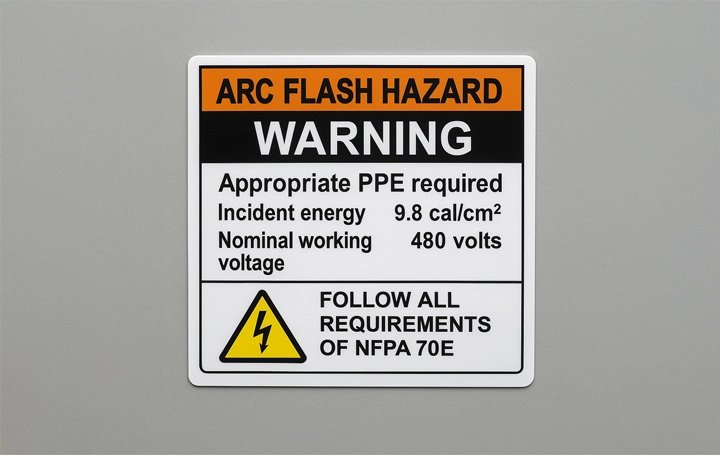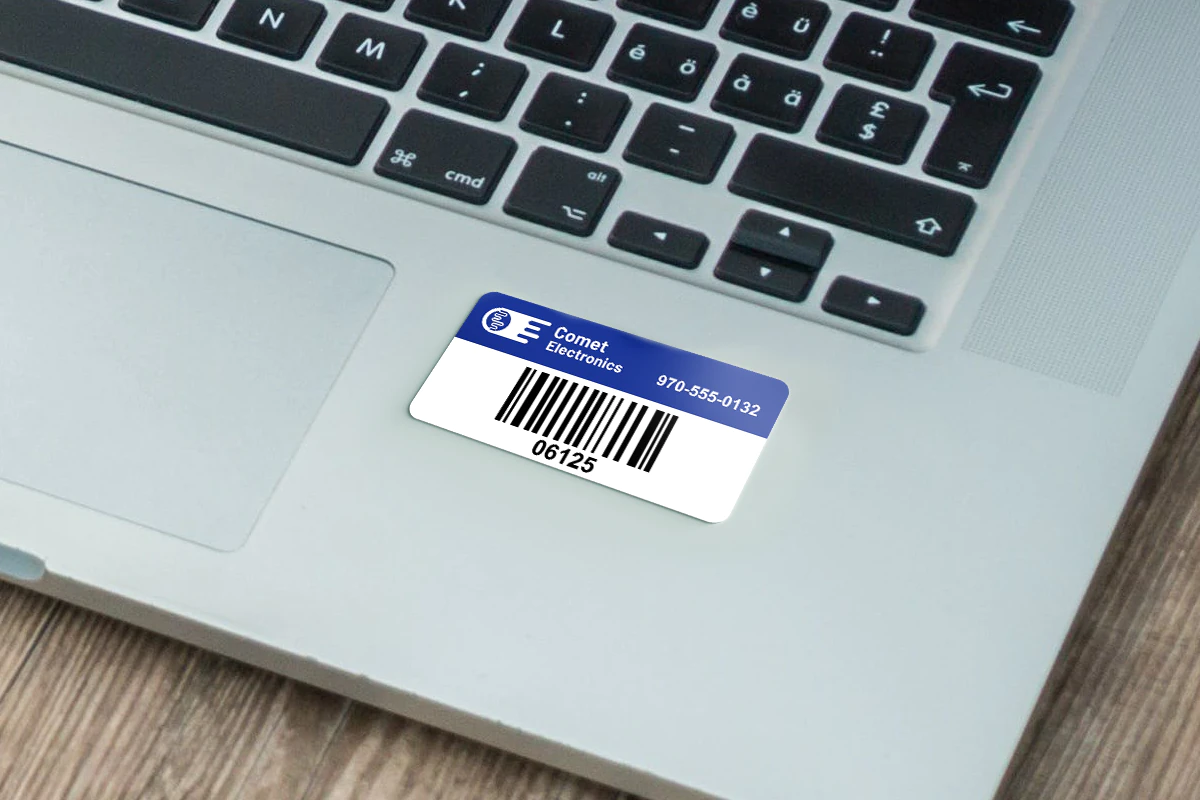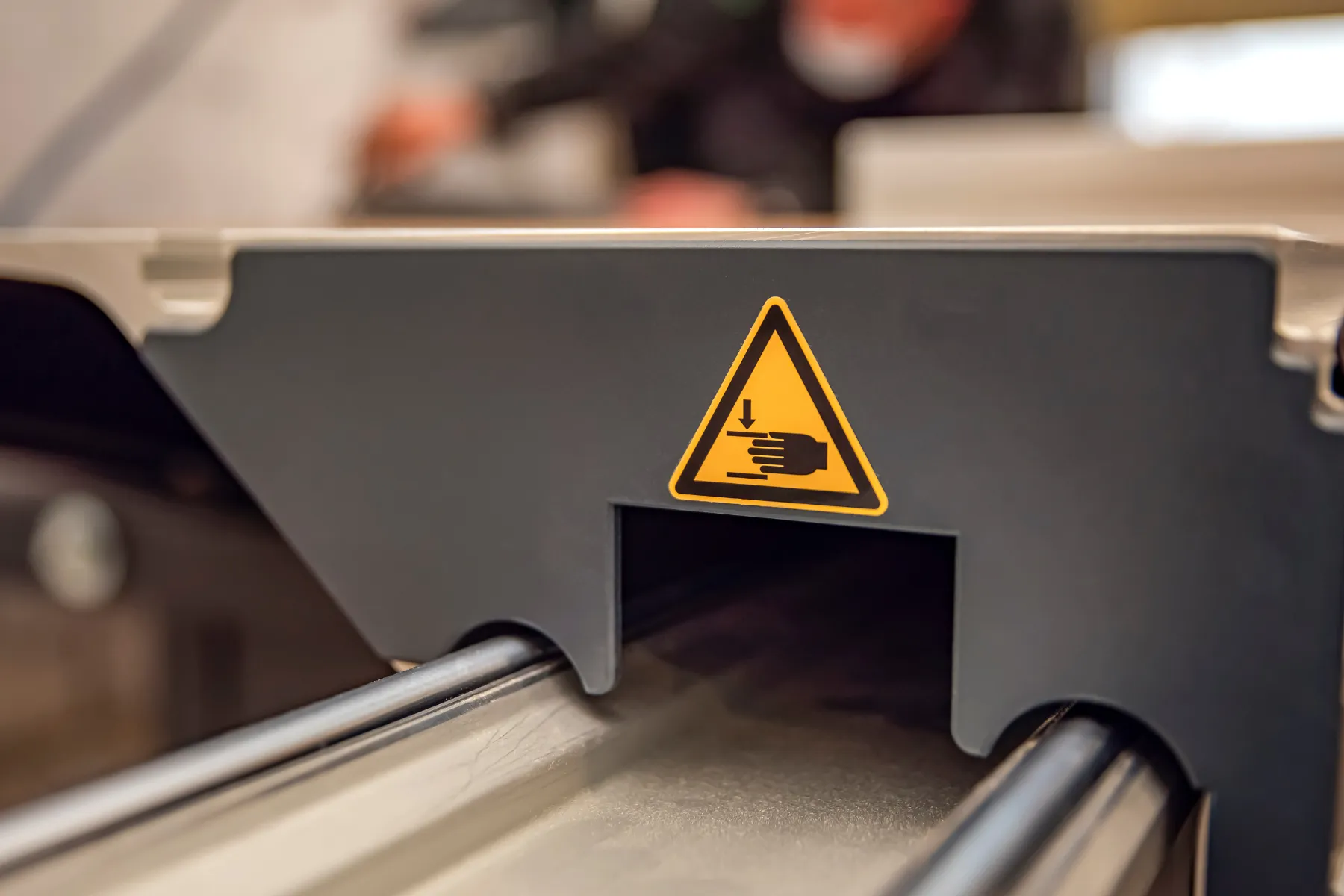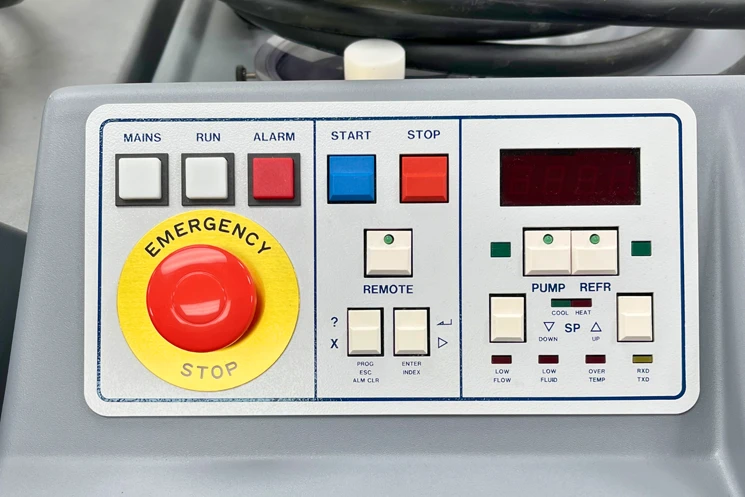Arc flash labeling is the process of identifying electrical equipment with standardized labels that warn of arc flash hazards and communicate essential safety data.
These labels help prevent injuries and ensure that personnel understand what protective gear is required before interacting with energized equipment. They’re a key component of workplace safety compliance, especially under NFPA 70E and OSHA regulations.

Understanding Arc Flash Hazards
An arc flash is a dangerous electrical explosion caused by a short circuit through the air. It can happen in a fraction of a second—causing severe burns, hearing damage, and even death. In industrial or commercial environments, arc flashes are most likely to occur during maintenance, switching operations, or equipment failure.
Labeling these hazards is the simplest way to make the danger clear—especially for teams working in high-traffic or multi-shift facilities.
What Needs to Be on an Arc Flash Label
A compliant equipment label isn’t just a warning sticker—it’s a detailed reference that helps workers stay safe and understand the risk.
Arc flash labels typically include:
- Warning Header: “Warning” or “Danger” with arc flash graphic
- Incident Energy: Measured in cal/cm² to indicate potential severity
- Arc Flash Boundary: Safe distance where PPE is required
- Required PPE: Gloves, shield, suit, and other protective gear based on energy level
- Equipment ID: What the label is tied to
- Date of Analysis: So workers know the data is current
All of this info helps a technician make fast, informed decisions—without having to look anything up.
How Arc Flash Labeling Is Actually Done
Here’s what the process typically looks like:
- Hazard analysis is completed
A qualified engineer or safety consultant performs a study of electrical systems and calculates incident energy. - Labels are printed
The data is formatted according to NFPA 70E guidelines and printed on durable, weather-resistant materials. - Labels are applied to equipment
Usually near breakers, control panels, disconnects, or other energized gear—where visibility is immediate. - Maintenance and re-evaluation happen regularly
Labels must be rechecked every 5 years or whenever the system changes (new gear, rerouting, etc.).
What Happens When Arc Flash Labels Are Missing or Outdated
Outdated or unreadable labels can lead to failed inspections, confused maintenance crews, and increased risk of injury. This isn’t theory—it happens regularly in industrial environments.
One distribution facility failed an OSHA inspection when two panels had unreadable warnings. The ink had faded due to cleaning and heat exposure. After switching to laminated polyester arc flash labels, they passed their next audit—and their team became more confident working around energized gear.
The Results of Proper Labeling
The shift was immediate:
- Safety incidents dropped
- Inspection readiness improved
- Worker confidence in label accuracy rose

What Happens When Labels Are Outdated or Missing
In one real case, a distribution facility failed an OSHA inspection after two panels were found with unreadable labels. The ink had faded due to cleaning chemicals and heat exposure. While no fines were issued, they were placed under review.
After updating labels with laminated polyester arc flash labels, future audits passed, and crews reported improved confidence during lockout/tagout and troubleshooting.
This kind of proactive labeling isn’t just paperwork—it reduces risk in real time.
Labels That Stay Readable When It Counts
Arc flash labels are exposed to:
- Heat from nearby equipment
- Cleaning solvents and oils
- Touch and abrasion from tools and gloves
- Humidity or outdoor exposure
That’s why paper-based stickers or laminated office prints don’t hold up. Industrial settings require materials like:
- Polyester with UV and chemical resistance
- Permanent acrylic adhesives
- Fade-resistant inks with ANSI color standards
If a label fades, peels, or cracks—it’s no longer protecting anyone.
Organizing Equipment Labeling for Arc Flash Hazards?
If your facility is reviewing safety signage, updating arc flash labels, or preparing for audit readiness, the label is where it starts. A readable, durable tag is what keeps information front and center—where it’s needed most.
Teams managing equipment labeling for arc flash hazards often rely on industrial labels built for electrical environments—the kind that resist cleaning agents, sunlight, and rough handling without fading or lifting.
Arc Flash Labeling FAQs
Labels must include incident energy, arc flash boundary, PPE category, equipment ID, and analysis date—following NFPA 70E.
Every 5 years, or immediately after changes to the electrical system that could affect incident energy levels.
The employer is responsible under OSHA 1910.269 and NFPA 70E, often through coordination with electrical engineers.
Yes, but only if you use industrial-grade label materials and comply with format, visibility, and content standards.
Injury, liability, failed inspections, and possible OSHA fines. More importantly, it leaves workers unaware of what PPE they need.



